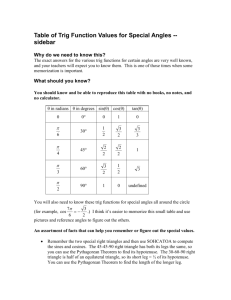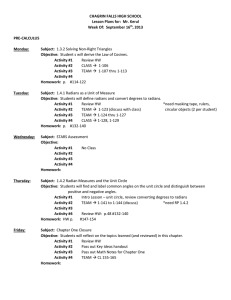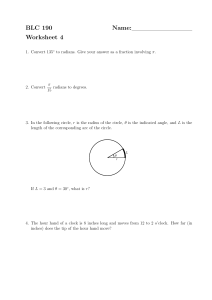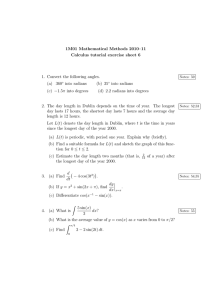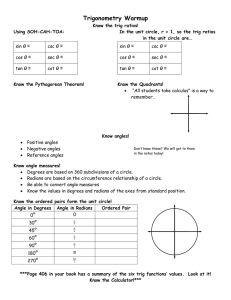A Trigonometry Primer x = h * cos(θ)
advertisement
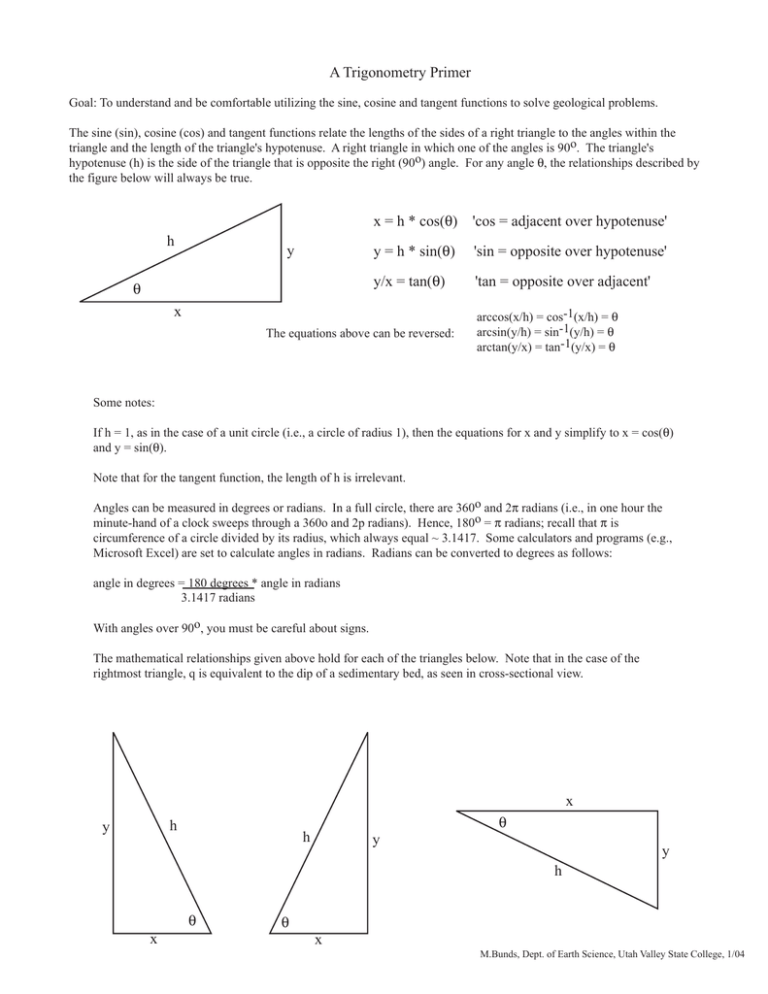
A Trigonometry Primer Goal: To understand and be comfortable utilizing the sine, cosine and tangent functions to solve geological problems. The sine (sin), cosine (cos) and tangent functions relate the lengths of the sides of a right triangle to the angles within the triangle and the length of the triangle's hypotenuse. A right triangle in which one of the angles is 90o. The triangle's hypotenuse (h) is the side of the triangle that is opposite the right (90o) angle. For any angle θ, the relationships described by the figure below will always be true. h y θ x = h * cos(θ) 'cos = adjacent over hypotenuse' y = h * sin(θ) 'sin = opposite over hypotenuse' y/x = tan(θ) 'tan = opposite over adjacent' x The equations above can be reversed: arccos(x/h) = cos-1(x/h) = θ arcsin(y/h) = sin-1(y/h) = θ arctan(y/x) = tan-1(y/x) = θ Some notes: If h = 1, as in the case of a unit circle (i.e., a circle of radius 1), then the equations for x and y simplify to x = cos(θ) and y = sin(θ). Note that for the tangent function, the length of h is irrelevant. Angles can be measured in degrees or radians. In a full circle, there are 360o and 2π radians (i.e., in one hour the minute-hand of a clock sweeps through a 360o and 2p radians). Hence, 180o = π radians; recall that π is circumference of a circle divided by its radius, which always equal ~ 3.1417. Some calculators and programs (e.g., Microsoft Excel) are set to calculate angles in radians. Radians can be converted to degrees as follows: angle in degrees = 180 degrees * angle in radians 3.1417 radians With angles over 90o, you must be careful about signs. The mathematical relationships given above hold for each of the triangles below. Note that in the case of the rightmost triangle, q is equivalent to the dip of a sedimentary bed, as seen in cross-sectional view. x h y h y θ h x θ θ x y M.Bunds, Dept. of Earth Science, Utah Valley State College, 1/04
